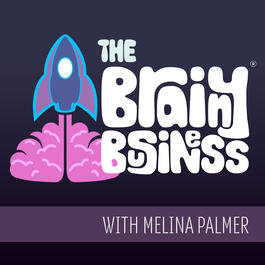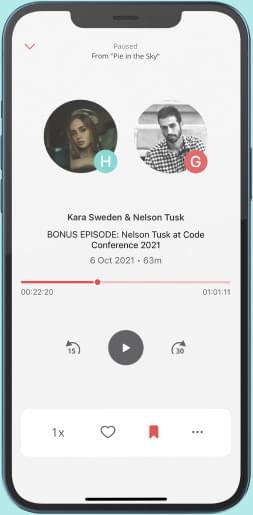
Unlocking the Microstress Mystery with Dr. Rob Cross
The manner in which we communicate plays an essential role in contributing to or easing microstress. With the proliferation of remote work and numerous communication channels, it is vital to be mindful and intentional in our communication with colleagues and acquaintances. Establishing positive communication norms can alleviate microstress and create a more collaborative and productive work environment. Rob Cross highlighted the need for thoughtful communication in his conversation with Melina Palmer. He shared that teams should establish clear communication norms, such as using bullet points rather than lengthy paragraphs, avoiding unnecessary CC in emails, and refraining from sending messages after a particular time. By adopting such positive communication practices, teams can work towards fostering a supportive workplace culture and minimizing the impact of microstress on all members. Unveil the methods for recognizing and neutralizing everyday workplace microstressors to elevate your work experience. Comprehend the ramifications of toxic relationships on your well-being and establish pathways for transformation. Benefit from Rob Cross's research on the microstress effect and its applications to your personal and professional sphere. Refine your communication skills to address microstress mindfully and cultivate enriching connections. Bring about small alterations that result in remarkable betterment of your holistic well-being. Show Notes: 00:00:00 - Introduction, Host Melina Palmer introduces Dr. Rob Cross, who is the Edward A. Madden Professor of Global Leadership at Babson College and the co-founder and director of the Connected Commons. The episode is about the new book he co-authored with Karen Dillon, The Microstress Effect. 00:03:02 - Background, Rob Cross talks about his background and his work with the Connected Commons, a consortium of over 150 leading organizations that sponsor research into ways of looking at networks and relationships in organizations. 00:06:32 - The Impact of Negative Relationships, Social psychology has shown that the negative interactions we have tend to have 3x to 5x the impact of the positive. Rob Cross shares his thoughts on the best practices for organizations to cultivate relationships that positively impact their employees' wellbeing. 00:08:15 - Resilience and Connections, Resilience is not just about grit and fortitude. It's about how we fall back on others in difficult times. Rob Cross discovered that there are eight predictable things we get from others when we have the connections in our lives. Without these, it's harder to navigate through difficult times. 00:12:23 - Understanding Microstress, Rob Cross shares how he stumbled onto the idea of microstress through his research. He found that there are 14 pretty consistent types of microstress that tend to accumulate around us each day and week at a pace and volume our brains just aren't designed to handle. These microstresses grow behind the scenes in a way that sneaks up on us until they become overwhelming. 00:14:55 - The Impact of Microstress, Rob discusses the impact of microstress on one's life, particularly when they are not aware of it. He talks about how the stress is just beneath the surface of awareness and can be creeping up on us. 00:17:09 - Types of Microstress, Rob explains that microstressors can come from different sources, including emails, instant messaging applications, and team collaborative spaces. He shares that it affects the metabolism differently, and people under this form of stress metabolize their meals differently. 00:22:44 - Cascading Effects of Microstress, Rob shares that microstressors can lead to cascading effects that people don't often think about. For example, a leader or stakeholder that shifts expectations can cause extra work, and employees may have to protect their team and go back into the team to keep engagement high. 00:24:24 - Tips on Dealing with Microstress, Rob suggests a table in the book with the 14 microstressors and categories of people where they come from, and answering three questions around them. He advises people to think about which stressors have become systemic in their lives and what stress they are creating for others. Rob also mentions the importance of finding groups outside of one's profession that they can be an authentic part of. 00:27:15 - Avoiding Getting into the Minutiae, Rob suggests focusing on getting out of the minutiae by finding groups outside one's profession that one can be an authentic part of. He shares that people who are happiest in this work typically have at least two or three groups outside their profession. 00:28:27 - The Impact of Traumatic Events, When experiencing a traumatic health diagnosis or event, people often reflect on what previously seemed important and realize it was insignificant. Those who maintain dimensionality in their life are better equipped to handle such events. Reflecting on interactions and adapting them can have a significant impact on how one feels day-to-day. 00:30:24 - The Impact of Communication on Stress, Poor communication habits, such as overdramatizing gossip or sending excessive emails, can lead to unnecessary stress and negative work interactions. Thoughtful and intentional communication, such as establishing positive norms and reducing unnecessary communication, can help reduce microstressors. 00:34:06 - Decreasing Collaboration Overload, Collaboration overload, where the amount of collaboration outweighs the increase in work, is a significant source of microstressors. By creating positive norms, such as bullet points instead of long paragraphs, or agreeing on a set number of emails per day, the collaborative footprint of work can be reduced. 00:37:36 - The Impact of Small Communication Habits, Small communication habits, such as sending vague or poorly-worded emails or leaving a negative aftertaste in interactions, can accumulate and have a significant impact on work stress levels. Thoughtful interactions, such as being intentional with emails or setting clear expectations for team collaborations, can help reduce microstressors. 00:41:20 - The Impact of Trust and Expectations, Lack of trust and unclear expectations can lead to stress when working on collaborative projects. People often work harder to compensate for small misses from team members, perpetuating the cycle of stress. Setting clear expectations and building trust can help reduce microstressors in collaborative work environments. 00:42:12 - Drains to Capacity, The 14 microstressors that affect our ability to get work done can be categorized as drains to capacity that hit us emotionally (such as worry or concern for people we care about), or value disconnects, where we slowly feel interactions moving us away from who we set out to be. 00:43:28 - Counterfactual Thinking, Dwelling on what had happened or what might happen in the future can be a big contributor to microstress. This can be interactions abroad where we are trying to protect our team, family, or friends. It can also be a conflictual conversation that needs to happen, which can cause disproportionate stress. 00:45:23 - Specific Ways to Manage Conflictual Conversations, Conflictual conversations can be cathartic and good for people if we keep things data-driven and do specific things. We tend to think a lot about it before, during, and after the interaction, and this can cause stress. There are specific ways to handle conflictual conversations that can reduce stress. 00:47:10 - Importance of Small Stuff, Small stressors in our lives and those of people around us can cause massive amounts of stress that are totally unnecessary. Often, we don't realize the impact that our actions are having on others. The book, The Microstress Effect, provides charts and mockups of questions to ask and ways to work through microstress to have an impact on our lives and those around us. 00:49:31 - Closing Thoughts, Melina's top insights from the conversation, and items for you to consider as you implement what you learn. What stuck with you while listening to the episode? What are you going to try? Come share it with Melina on social media -- you'll find her as @thebrainybiz everywhere and as Melina Palmer on LinkedIn. Thanks for listening. Don't forget to subscribe on Apple Podcasts or Android. If you like what you heard, please leave a review on iTunes and share what you liked about the show. I hope you love everything recommended via The Brainy Business! Everything was independently reviewed and selected by me, Melina Palmer. So you know, as an Amazon Associate I earn from qualifying purchases. That means if you decide to shop from the links on this page (via Amazon or others), The Brainy Business may collect a share of sales or other compensation. Let's connect: Melina@TheBrainyBusiness.com The Brainy Business® on Facebook The Brainy Business on Twitter The Brainy Business on Instagram The Brainy Business on LinkedIn Melina on LinkedIn The Brainy Business on Youtube Join the BE Thoughtful Revolution – our free behavioral economics community, and keep the conversation going! Learn and Support The Brainy Business: Check out and get your copies of Melina's Books. Get the Books Mentioned on (or related to) this Episode: The Microstress Effect, by Rob Cross and Karen Dillon The Fun Habit, by Mike Rucker Happier Hour, by Cassie Holmes Getting Along, by Amy Gallo What Your Employees Need and Can't Tell You, by Melina Palmer Connect with Rob: Rob on Twitter Rob on LinkedIn Rob's Website Top Recommended Next Episode: Counterfactual Thinking (ep 286) Already Heard That One? Try These: The Fun Habit, with Mike Rucker (ep 251) Happier Hour, with Cassie Holmes (ep 257) Negativity Bias (ep 223) Find Your Purpose, with Gina Bianchini (ep 263) The Importance of Connection, with Nick Epley (ep 265) Framing (ep 16) IKEA Effect (ep 112) Prefactual Thinking (ep 232) The Speed and Economics of Trust, with Stephen M.R. Covey (ep 148) Reciprocity (ep 238) Getting Along, with Amy Gallo (ep 269) Other Important Links: Brainy Bites - Melina's LinkedIn Newsletter
From "The Brainy Business | Understanding the Psychology of Why People Buy | Behavioral Economics"




Comments
Add comment Feedback